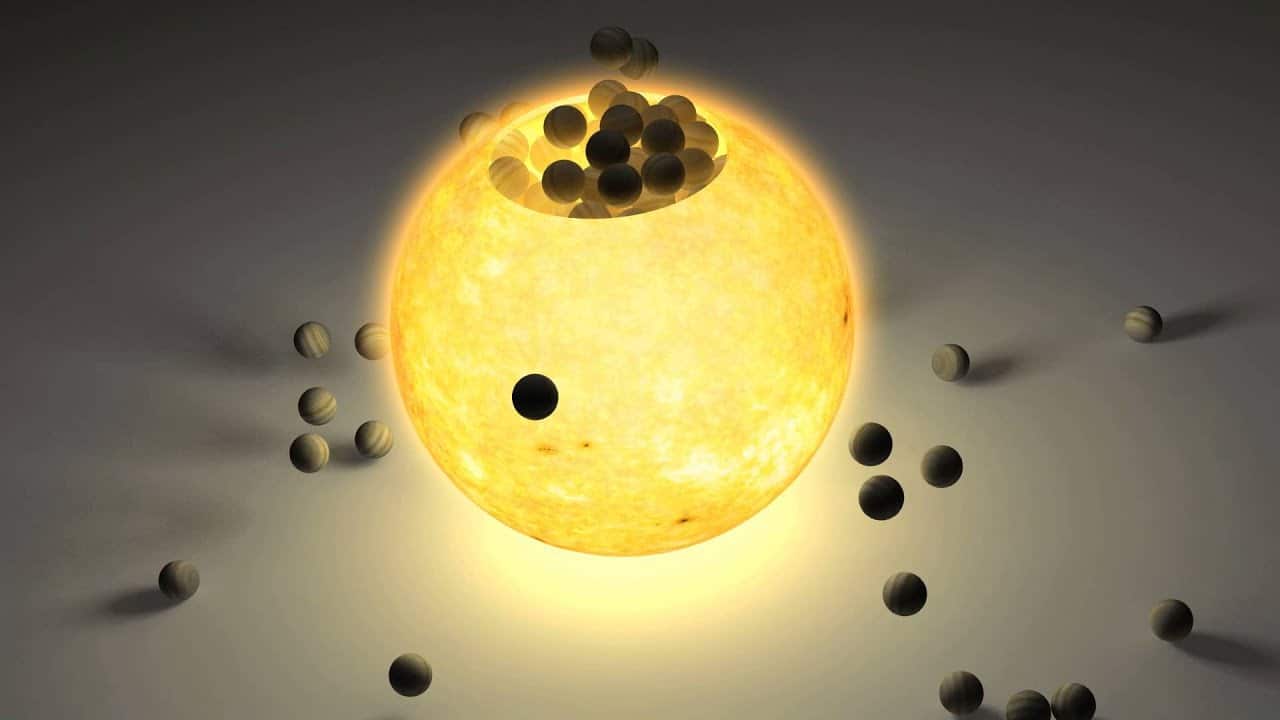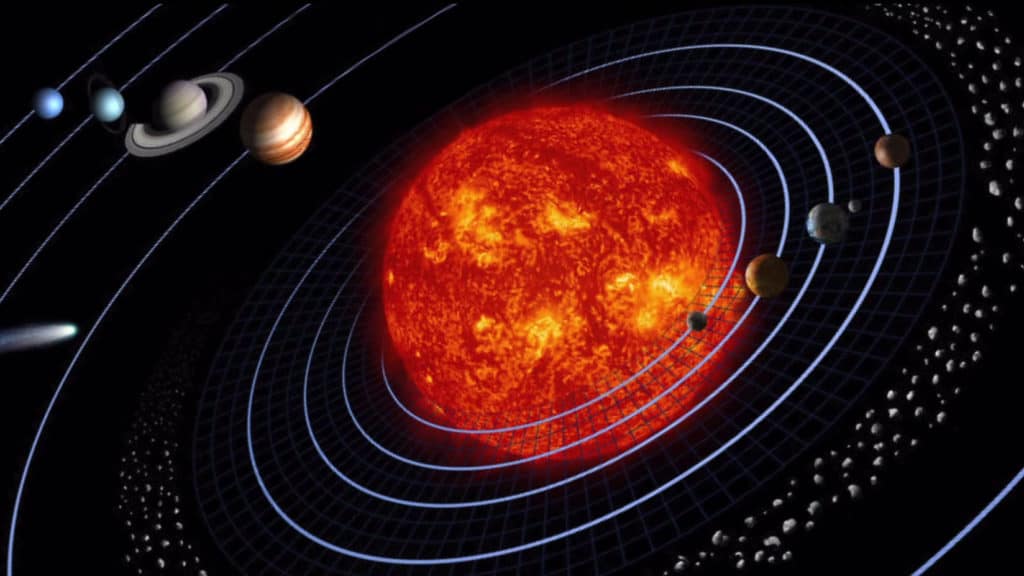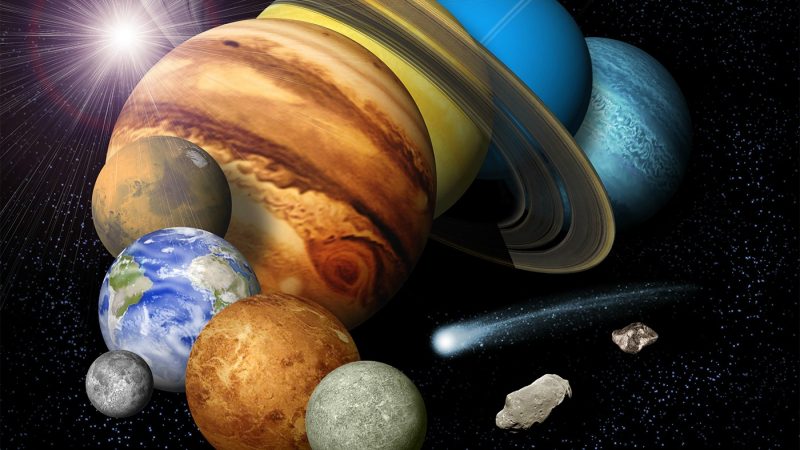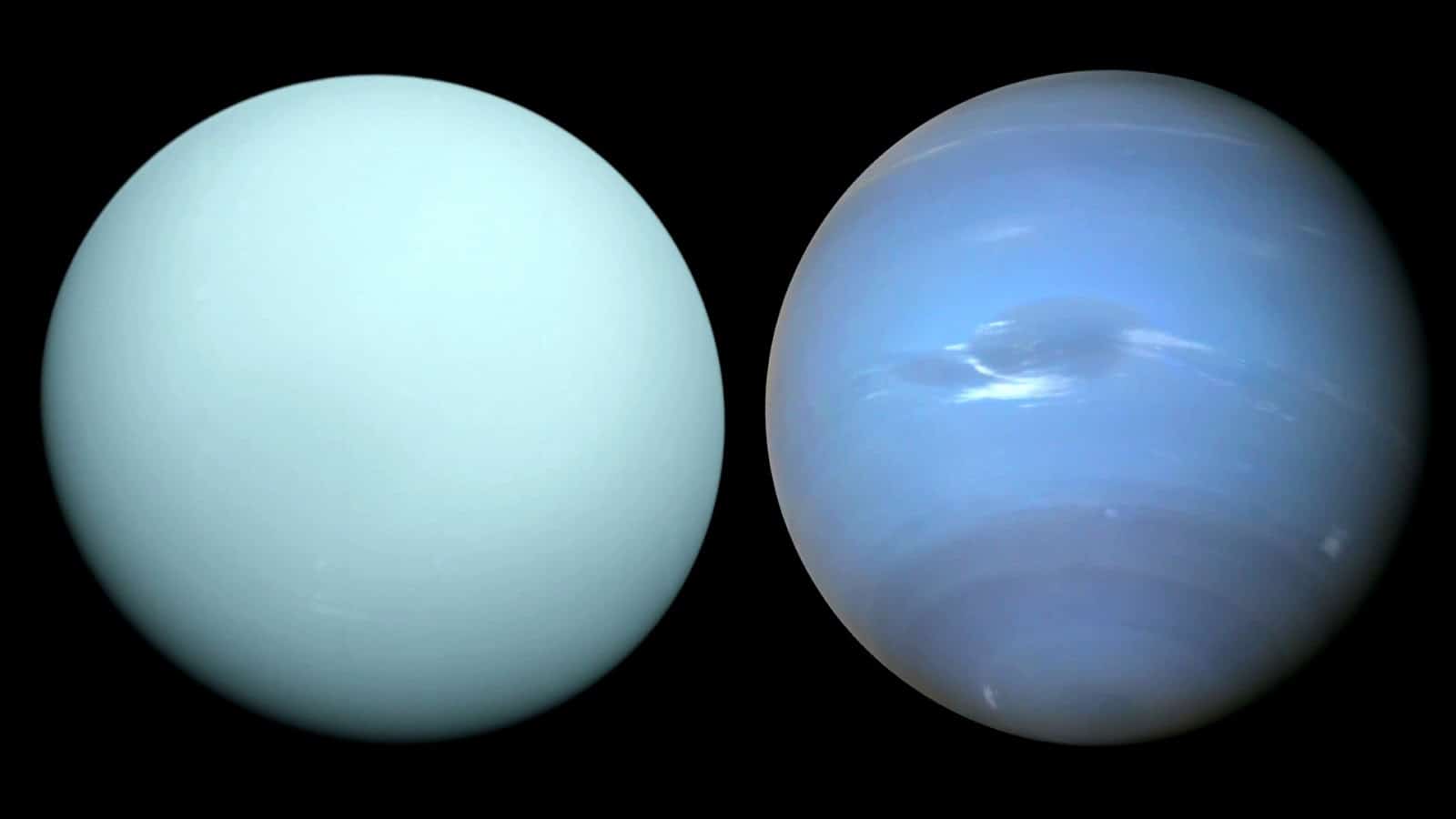Our Sun is the biggest celestial object in the Solar System, containing 99.8% of all the Solar System’s mass. Compared to Earth, which has a mass of around 5.9 quadrillion kg, the Sun is 330.000 times more massive than our little home planet.
Jupiter, the largest planet in our Solar System, has 318 Earth masses, while Mercury, the smallest planet, has only 0.055 Earth Masses. With that being said, how many Earths can fit inside the Sun?

More than one million Earths could fit inside the Sun if it were hollow. The Sun has a radius of 696.340 km / 432.685 mi and a diameter of 1.39 million km / 864.000 mi.
Earth, for comparison, has a radius of only 2.439 km / 1.516 mi, and a diameter of just 12.742 km / 7.917 mi. All the planets in our Solar System combined account for just 0.2% of the Sun’s mass. However, how do the other planets fare in these comparisons? Let’s find out!
Mercury, Venus, and Mars
Mercury is the smallest planet in our Solar System, having a diameter of only 4.879 km / 3.032 mi, and a radius of 2.439 km / 1.516 mi, and only 0.055 Earth masses.
It would take around more than 21.2 million Mercury-sized planets to fit inside the Sun. When it comes to Venus, things get a bit different. Venus is the sixth-largest planet from the Sun, having a diameter of 12.104 km / 7.521 mi, and a radius of around 6.051 km / 3.760 mi. The mass of Venus is equivalent to 0.9 Earth masses, or 90% of our Earth’s mass.

When comparing Venus to the Sun, it starts to shrink drastically, as you could fit 1.5 million Venus-sized planets inside the Sun, if it were hallowed.
Now let’s talk about Mars. Mars is the second-smallest planet in the Solar System, having a diameter of only 6.779 km / 4.212 mi (30% bigger than Mercury), and a radius of 3.389 km / 2.105 mi. Mars has only 11% of our Earth’s mass or 0.11 Earth masses. It would take around 7 million Mars-sized planets to fill the Sun.
Jupiter and Saturn
Moving on to the great gas giants, Jupiter and Saturn, the numbers start to go down or up in other cases. Jupiter is the biggest planet in our Solar System but pales when compared in size to the Sun and any other aspects.
Jupiter has a diameter of around 142.984 km / 88.846 mi at the equator, and a diameter of about 133.708 km / 83.082 mi at the poles. It has a mean radius of 69.911 km / 43.440 mi, and its mass is equivalent to 318 Earth masses. You could fit 1.300 Earths inside Jupiter.

Jupiter might seem impressive in these regards, but it would only take around 1.000 Jupiter-sized planets to fill the Sun. When it comes to Saturn, which is the second-largest planet in our Solar System, things start to change.
Saturn has a diameter of approximately 120.536 km / 74.897 mi and a radius of around 58.232 km / 36.183 mi. It is quite massive as well, having the equivalent of 95.16 Earth masses. It would take more than 1,700 Saturn-sized planets to fill the Sun.
Uranus and Neptune
The icy giants, Uranus and Neptune, are a bit similar in size and mass but lets how they fare against the Sun. Let’s start with Uranus, which is the third-largest planet in the Solar System. Uranus has a diameter of around 51.118 km / 31.763 mi and a radius of 25.362 km / 15.759 mi.
Uranus is reasonably massive, with its mass being equivalent to 14.54 Earth masses. It would take around 22.000 Uranus-sized planets to fill the Sun. Things differ a bit when it comes to Neptune.

Neptune is the fourth-largest planet in the Solar System, having a diameter of 49.244 km / 30.598 mi, and a radius of 24.764 km / 15.387 mi. The mass of Neptun is equivalent to 17.15 Earth masses. You can fit around more than 1,800 Neptune-sized planets inside the Sun.
Pluto
Let’s talk about a planet that no longer fits in, yes, the dwarf planet Pluto. Pluto is the ninth-largest planet in the Solar System, and though many don’t regard it as a planet anymore, we figured it deserves a spot here regardless.
Pluto has a diameter of around 2.376 km / 1.476 mi and a radius of around 1,188 km / 738 mi. It’s not quite a massive planet, since it has only 0.01 Earth masses or just 1% of our Earth’s mass. Thus, it would take more than 200 million Pluto-sized planets to fill the Sun.

But if we are going to talk small, let’s talk about our Moon. Earth’s Moon has a diameter of around 3.474 km / 2.158 mi and a radius of 1.737 km / 1.079 mi. In comparison to Earth, the Moon has only 1.2% of Earth’s mass, or in another way of looking at it, the Earth is 81 times heavier than the Moon.
It would take around 64.3 million Moons to fit inside the Sun, filling it whole. If we were to fill the Earth with Moons, we would need approximately 50 Moons to do so.
Did you know?
- The largest moon in the Solar System is Ganymede, which is also the most massive moon in our system, and the biggest moon of Jupiter.
- Ganymede is larger than the dwarf planet Pluto, or the planet Mercury, or Mars, having a diameter of 5.268 km / 3.273 mi.
- The Solar System is quite huge, as you can fit 278.8 billion Sun’s in it. Comparing our Sun to other giant celestial stars, such as the supergiant red star UY Scuti, it would take around 3.69 billion Sun’s to fill UY Scuti. Now imagine comparing the planets of the Solar System to UY Scuti.
- Some theorize that if Jupiter were around 70 times or more massive than it currently is, it would have become a star.
Sources:
Image Sources:
- https://i.ytimg.com/vi/EixrkUnBUZs/maxresdefault.jpg
- https://nineplanets.org/wp-content/uploads/2019/09/inasnap_solarsystem-1024×576.jpg
- https://earthsky.org/upl/2017/04/solar-system-illustration-nasa-e1491345066508.jpg
- https://1.bp.blogspot.com/-Av6JLuw8uhQ/WDRp-ccbRKI/AAAAAAAAHFo/q63vcPHqz84QBv7rWMPPmgwfDIqBqt3ygCPcB/s1600/GIGANTES%2BHELADOS%2B2016.jpg
- https://i.ytimg.com/vi/k-JQR-DWUqE/maxresdefault.jp
